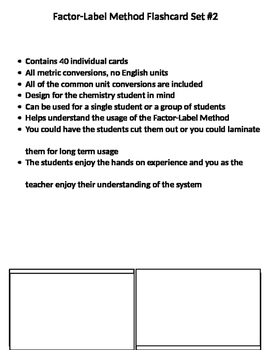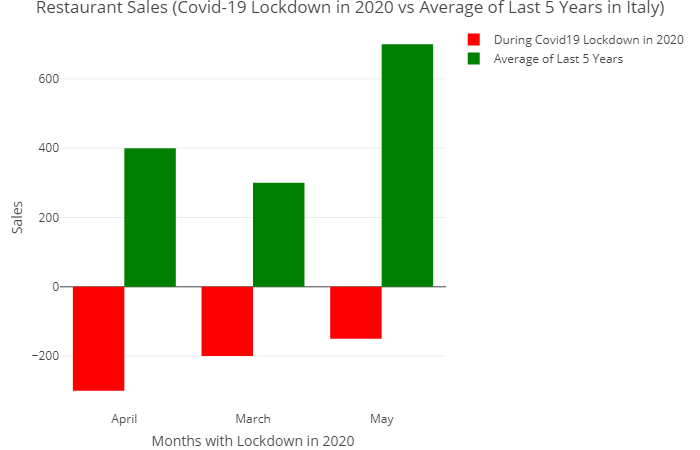41 change factor labels in r
10.8 Changing the Labels in a Legend - R Graphics To do that, you would have to set the labels of scale_x_discrete () (Recipe 8.10 ), or change the data to have different factor level names (Recipe 15.10 ). In the preceding example, group was mapped to the fill aesthetic. Convert Factor to Numeric and Numeric to Factor in R Programming To achieve this, one has to use the functions as.character () or as.numeric (). There are two steps for converting factor to numeric: Step 1: Convert the data vector into a factor. The factor () command is used to create and modify factors in R. Step 2: The factor is converted into a numeric vector using as.numeric ().
How to rename the factor levels of a factor variable by using mutate of ... R Programming Server Side Programming Programming. We know that a factor variable has many levels but it might be possible that the factor levels we have are not in the form as needed. For example, if we want to have capital letters as a factor level but the original data has small letters of English alphabets. In this situation we can rename ...

Change factor labels in r
Quick-R: Value Labels You can use the factor function to create your own value labels. # variable v1 is coded 1, 2 or 3 # we want to attach value labels 1=red, 2=blue, 3=green mydata$v1 <- factor (mydata$v1, levels = c (1,2,3), labels = c ("red", "blue", "green")) # variable y is coded 1, 3 or 5 # we want to attach value labels 1=Low, 3=Medium, 5=High FACTOR in R [CREATE, CHANGE LABELS and CONVERT data] - R CODER On the one hand, the labels argument allows you to modify the factor levels names. Hence, the labels argument it is related to output. Note that the length of the vector passed to the labels argument must be of the same length of the number of unique groups of the input vector. factor(gender, labels = c("f")) Output f f f f Levels: f Change Axis Labels of Boxplot in R - GeeksforGeeks Method 2: Using ggplot2. If made with ggplot2, we change the label data in our dataset itself before drawing the boxplot. Reshape module is used to convert sample data from wide format to long format and ggplot2 will be used to draw boxplot. After data is created, convert data from wide format to long format using melt function.
Change factor labels in r. labels function - RDocumentation Per default, all numeric and factor variables of data are used. labels. labels for the variables. If labels = TRUE (the default), labels (data, which = variables) is used as labels. If labels = NULL variables is used as label. labels can also be specified as character vector. by. How to Reorder Factor Levels in R (With Examples) - Statology How to Reorder Factor Levels in R (With Examples) Occasionally you may want to re-order the levels of some factor variable in R. Fortunately this is easy to do using the following syntax: factor_variable <- factor(factor_variable, levels=c ('this', 'that', 'those', ...)) The following example show how to use this function in practice. Change Labels of ggplot2 Facet Plot in R (Example) - Statistics Globe Let's do this: data_new <- data # Replicate data levels ( data_new$group) <- c ("Label 1", "Label 2", "Label 3") # Change levels of group We have created a new data frame called data_new that contains different factor levels. Now, we can apply basically the same ggplot2 code as before to our new data frame. How to Rename and Relevel Factors in R - Predictive Hacks A "special" data structure in R is the "factors". We are going to provide some examples of how we can rename and relevel the factors. For the next examples, we will work with the following data ... Another way to change the order is to use relevel() to make a particular level first in the list. (This will not work for ordered factors ...
How to Convert Factor to Numeric in R (With Examples) - Statology How to Convert Factor to Numeric in R (With Examples) We can use the following syntax to convert a factor vector to a numeric vector in R: numeric_vector <- as.numeric(as.character(factor_vector)) We must first convert the factor vector to a character vector, then to a numeric vector. This ensures that the numeric vector contains the actual ... Renaming levels of a factor - cookbook-r.com It's possible to rename factor levels by name (without plyr), but keep in mind that this works only if ALL levels are present in the list; if any are not in the list, they will be replaced with NA. R Factor and Factor Levels: How to Create Factors in R - R-Lang How to Create Factor in R. To create a Factor in R, use the factor () method. The factor () method takes a vector as an input and returns the factor. The factor () function is used to encode a vector as a factor. If the argument ordered is TRUE, the factor levels are considered to be ordered. For compatibility with S, there is also a function ... R: Change labels of factors or labelled objects R Documentation Change labels of factors or labelled objects Description Function relabel changes the labels of a factor or any object that has a names, labels, value.labels, or variable.labels attribute. Function relabel4 is an (internal) generic which is called by relabel to handle S4 objects. Usage
15.8 Changing the Order of Factor Levels - R Graphics 15.8.3 Discussion. There are two kinds of factors in R: ordered factors and regular factors. (In practice, ordered levels are not commonly used.) In both types, the levels are arranged in some order; the difference is that the order is meaningful for an ordered factor, but it is arbitrary for a regular factor - it simply reflects how the data is stored. Change Legend Labels of ggplot2 Plot in R (2 Examples) As shown in Figure 2, we have modified the text of the legend items with the previous R programming code. Note that the previous R code also change the color of the data points in our scatterplot. Example 2: Rename Factor Levels to Change Legend Labels of ggplot2 Plot 15.10 Changing the Names of Factor Levels - R Graphics 11.1 Splitting Data into Subplots with Facets. 11.2 Using Facets with Different Axes. 11.3 Changing the Text of Facet Labels. 11.4 Changing the Appearance of Facet Labels and Headers. 12 Using Colors in Plots. 12.1 Setting the Colors of Objects. 12.2 Representing Variables with Colors. Add, replace or remove value labels of variables — add_labels Details. add_labels () adds labels to the existing value labels of x, however, unlike set_labels, it does not remove labels that were not specified in labels. add_labels () also replaces existing value labels, but preserves the remaining labels. remove_labels () is the counterpart to add_labels () . It removes labels from a label attribute of x .
How to Rename Factor Levels in R using levels() and dplyr - Erik Marsja One simple method to rename a factor level in R is levels (your_df$Category1) [levels (our_df$Category1)=="A"] <- "B" where your_df is your data frame and Category1 is the column containing your categorical data. Now, this would recode your factor level "A" to the new "B". How do I Rename Factor Levels in R?
Renaming labels of a factor in R - Stack Overflow Add a comment. -1. To change all the factor labels with one function, you can use forcats::fct_relabel ( forcats ships as part of the tidyverse, which you've already got loaded). The changed factor labels will carry over to the plot facets and the order stays the same. First few entries:
How to Change the Levels of a Factor in R - ProgrammingR We have two factors (wool, tension). We want to rename factor levels in r so they are easier to understand. Let's take look at their values: # look at factor levels in r for wool > levels (warpbreaks$wool) [1] "A" "B" # look at factor levels in r for tension > levels (warpbreaks$tension) [1] "L" "M" "H"
How to Rename Factor Levels in R (With Examples) - Statology How to Convert Factor to Numeric in R How to Convert Factor to Character in R How to Reorder Factor Levels in R. Published by Zach. View all posts by Zach Post navigation. Prev How to Calculate Cosine Similarity in Excel. Next How to Plot Multiple Histograms in R (With Examples)
Changing the order of levels of a factor - cookbook-r.com You want to change the order in which the levels of a factor appear. Solution. Factors in R come in two varieties: ordered and unordered, e.g., {small, medium, large} and {pen, brush, pencil}. For most analyses, it will not matter whether a factor is ordered or unordered. If the factor is ordered, then the specific order of the levels matters ...
Getting Started with R - Part 7: Factors - Levels and Labels You can set the levels labels after constructing a factor. This would be similar to passing in the labels parameter. We can pass a full new vector or just labels the labels of the levels selectively. Let us just change factor label 1 from "Jack" to "Mr. Prelutsky". levels(repeat_factor_labeled) [1] <- "Mr. Prelutsky" repeat_factor_labeled
How to Rename Factor Levels in R? - GeeksforGeeks The changes are made to the original factor vector. More than one factor can be renamed using this method. list (new-fac=val = old-fac-val,..) A combination of old and new factor variable values are declared inside the list () method. R val <- factor(c("Geeks","For","Geeks", "Coding","Fun")) print("Levels of factor") lvls <- levels(val) print(lvls)
Change Axis Labels of Boxplot in R - GeeksforGeeks Method 2: Using ggplot2. If made with ggplot2, we change the label data in our dataset itself before drawing the boxplot. Reshape module is used to convert sample data from wide format to long format and ggplot2 will be used to draw boxplot. After data is created, convert data from wide format to long format using melt function.
FACTOR in R [CREATE, CHANGE LABELS and CONVERT data] - R CODER On the one hand, the labels argument allows you to modify the factor levels names. Hence, the labels argument it is related to output. Note that the length of the vector passed to the labels argument must be of the same length of the number of unique groups of the input vector. factor(gender, labels = c("f")) Output f f f f Levels: f



![Learn SEO: The Ultimate Guide For SEO Beginners [2020] – Sybemo](https://mangools.com/blog/wp-content/uploads/2019/07/SEOsitecheckup-tool.png)




Post a Comment for "41 change factor labels in r"